
Turmeric
Turmeric (Curcuma longa) is a rhizomatous herbaceous perennial plant of the ginger family, Zingiberaceae. It is native to tropical South Asia and needs temperatures between 20 °C and 30 °C and a considerable amount of annual rainfall to thrive. Plants are gathered annually for their rhizomes, and propagated from some of those rhizomes in the following season. When not used fresh, the rhizomes are boiled for several hours and then dried in hot ovens, after which they are ground into a deep orange-yellow powder commonly used as a spice in curries and other South Asian and Middle Eastern cuisine, for dyeing, and to impart color to mustard condiments. Its active ingredient is curcumin and it has a distinctly earthy, slightly bitter, slightly hot peppery flavor and a mustardy smell. In medieval Europe, turmeric became known as Indian saffron, since it was widely used as an alternative to the far more expensive saffron spice. Nizamabad, a city in the south Indian state of Andhra pradesh, is the world’s largest producer and most important trading center of turmeric in Asia. For these reasons, Nizamabad in history is also known as “Turmeric City”. Sangli, a town in the southern part of the Indian western state of Maharashtra, is the second largest and most important trading center for turmeric in Asia. Turmeric is commonly called “Pasupu” in Telugu,Manjal in Tamil and haridra, haldar or Haldi in Hindi.
...more
red millets
Red millets The long storage capacity makes finger millet an important crop in risk-avoidance strategies for poorer farming communities.It is very adaptable to higher elevations and is grown in the Himalaya up to 2,300 metres in elevation.
...more
Nutmeg and Mace
Botanically known as Myristica fragrans, the nutmeg tree originates in Banda, the largest of the Molucca spice islands of Indonesia. The English word nutmeg comes from the latin nux, meaning nut, and muscat, meaning musky. In the first century A.D., Roman author Pliny speaks of a tree bearing nuts with two flavors. Emperor Henry VI had the streets of Rome fumigated with nutmegs before his coronation. In the the sixth century, nutmegs were brought by Arab merchants to Constantinople. In the fourteenth century, half a kilogram of nutmeg cost as much as three sheep or a cow. The Dutch waged a bloody war, including the massacre and enslavement of the inhabitants of the island of Banda, just to control nutmeg production in the East Indies. In 1760, the price of nutmeg in London was 85 to 90 shillings per pound, a price kept artificially high by the Dutch voluntarily burning full warehouses of nutmegs in Amsterdam. The Dutch held control of the spice islands until World War II. Frenchman Pierre Poivre transported nutmeg seedlings to Mauritius where they flourished, aiding in ending the Dutch monopoly of the spice. The British East India Company brought the nutmeg tree to Penang, Singapore, India, Sri Lanka, the West Indies, and most notably Grenada, where it is the national symbol and proudly emblazoned on the country’s red, yellow, and green flag. The nutmeg tree is evergreen, with oblong egg-shaped leaves and small, bell-like light yellow flowers that give off a distinct aroma when in bloom. The fruit is light yellow with red and green markings, resembling an apricot or a large plum. As the fruit matures, the outer fleshy covering (which is candied or pickled as snacks in Malaysia) bursts to reveal the seed. The seed is covered with red membranes called an aril, the mace portion of the nutmeg. The nut is then dried for up to 2 months until the inner nut rattles inside the shell. It is then shelled to reveal the valuable egg-shaped nutmeat which is the edible nutmeg. Second-rate nuts are pressed for the oil, which is used in perfumes and in the food industry.
...more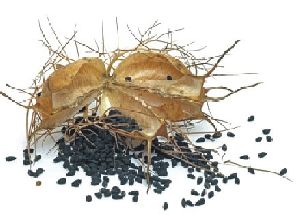
Nigella Seeds
Nigella sativa is an annual flowering plant, native to south and southwest Asia. It grows to 20–30 cm (7.9–12 in) tall, with finely divided, linear (but not thread-like) leaves. The flowers are delicate, and usually coloured pale blue and white, with five to ten petals. The fruit is a large and inflated capsule composed of three to seven united follicles, each containing numerous seeds. The seed is used as a spice. In English, Nigella sativa seed is variously called fennel flower, nutmeg flower, Roman coriander, blackseed or black caraway. Other names used, sometimes misleadingly, are onion seed and black sesame, both of which are similar-looking, but unrelated. CharacteristicsNigella sativa has a pungent bitter taste and smell. It is used primarily in confectionery and liquors. Peshawari naan is, as a rule, topped with kalonji seeds. HistoryAccording to Zohary and Hopf, archeological evidence about the earliest cultivation of N. sativa “is still scanty”, but they report supposed N. sativa seeds have been found in several sites from ancient Egypt, including Tutankhamun’s tomb. Although its exact role in Egyptian culture is unknown, it is known that items entombed with a pharaoh were carefully selected to assist him in the afterlife. The earliest written reference to N. sativa is thought to be in the book of Isaiah in the Old Testament, where the reaping of nigella and wheat is contrasted. Easton’s Bible dictionary states the Hebrew word ketsah refers to N. sativa without doubt (although not all translations are in agreement). According to Zohary and Hopf, N. sativa was another traditional condiment of the Old World during classical times; and its black seeds were extensively used to flavor food. Original black cumin (Carum bulbocastanum) is rarely available, so N. sativa is widely used instead; (in India, Carum carvi is the substitute).
...more
Mustard Seeds
Mustard seeds generally take three to ten days to germinate if placed under the proper conditions, which include a cold atmosphere and relatively moist soil. Mature mustard plants grow into shrubs. Mustard grows well in temperate regions. Major producers of mustard seeds include Canada (90%), Hungary, Great Britain, India, Pakistan and the United States. Brown and black mustard seeds return higher yields than their yellow counterparts. In Pakistan, rapeseed-mustard is the second most important source of oil, after cotton. It is cultivated over an area of 307,000 hectares with annual production of 233,000 tonnes and contributes about 17% to the domestic production of edible oil. Mustard seed is a rich source of oil and protein. The seed has oil as high as 46-48 percent, whole seed meal has 43.6 percent protein.
...more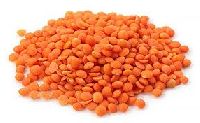
Masoor Pulses
The lentil or daal or pulse (Lens culinaris) is a bushy annual plant of the legume family, grown for its lens-shaped seeds. It is about 15 inches tall and the seeds grow in pods, usually with two seeds in each. The plant originated in the Near East, and has been part of the human diet since the aceramic Neolithic, being one of the first crops domesticated in the Near East. With 26% protein, lentil is the vegetable with the highest level of protein after soybeans and hemp, and because of this it is a very important part of the diet in many parts of the world, especially in India, which has a large vegetarian population.
...more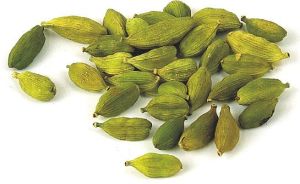
Green Cardamom
Cardamom (or cardamon) refers to several plants of the genera Elettaria and Amomum in the ginger family Zingiberaceae. Both genera are native to India and Bhutan; they are recognised by their small seed pod, triangular in cross-section and spindle-shaped, with a thin papery outer shell and small black seeds. Elettaria pods are light green while Amomum pods are larger and dark brown. The word cardamom is derived from the Latin cardamomum, the latinisation of the Greek καρδάμωμον (kardamomon), in turn from κάρδαμον (kardamon), “cress” + ἄμωμον (amomon), a kind of an Indian spice plant. The earliest attested form of the word kardamon is the Mycenaean Greek ka-da-mi-ja, written in Linear B syllabic script. Elettaria (commonly called cardamom, green cardamom, or true cardamom) is distributed from India to Malaysia. There were initially three natural varieties of green cardamom plants. Malabar (Nadan/Native) – As the name suggests, this is the native variety of Kerala. These plants have panicles which grow horizontally along the ground.Mysore – As the name suggests, this is a native variety of Karnataka. These plants have panicles which grow vertically upwards.Vazhuka – This is a naturally occurring hybrid between Malabar and Mysore varieties, and the panicles grow neither vertically nor horizontally, but in between. Recently, a few planters isolated high yielding plants and started multiplying them on a large scale. The most popular high yielding variety is “Njallani.” Njallani, also known as “rup-ree-t”, is a unique high-yielding cardamom variety developed by an Indian farmer. The variety has high adaptability to different shade conditions and can also be grown in waterlogged areas.
...more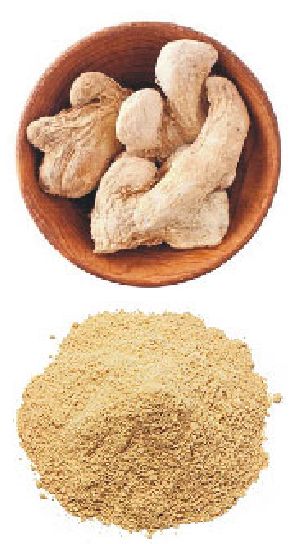
Ginger
Ginger is the rhizome of the plant Zingiber officinale, consumed as a delicacy, medicine, or spice. It lends its name to its genus and family (Zingiberaceae). Other notable members of this plant family are turmeric, cardamom, and galangal. Ginger cultivation began in South Asia and has since spread to East Africa and the Caribbean. It is sometimes called root ginger to distinguish it from other things that share the name ginger. Ginger produces clusters of white and pink flower buds that bloom into yellow flowers. Because of its aesthetic appeal and the adaptation of the plant to warm climates, ginger is often used as landscaping around subtropical homes. It is a perennial reed-like plant with annual leafy stems, about a meter (3 to 4 feet) tall. Traditionally, the root is gathered when the stalk withers; it is immediately scalded, or washed and scraped, to kill it and prevent sprouting. In Western cuisine, ginger is traditionally used mainly in sweet foods such as ginger ale, gingerbread, ginger snaps, parkin, ginger biscuits and speculaas. A ginger-flavored liqueur called Canton is produced in Jarnac, France. Green ginger wine is a ginger-flavored wine produced in the United Kingdom, traditionally sold in a green glass bottle. Ginger is also used as a spice added to hot coffee and tea.
...more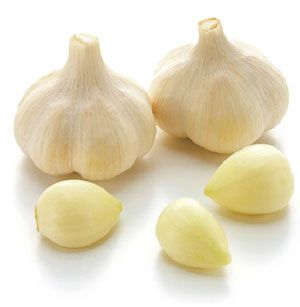
Garlic
Allium sativum, commonly known as garlic, is a species in the onion genus, Allium. Its close relatives include the onion, shallot, leek, chive, and rakkyo. Dating back over 6,000 years, garlic is native to central Asia, and has long been a staple in the Mediterranean region, as well as a frequent seasoning in Asia, Africa, and Europe. It was known to Ancient Egyptians, and has been used throughout its history for both culinary and medicinal purposes. The ancestry of cultivated garlic is not definitively established. According to Zohary and Hopf, “A difficulty in the identification of its wild progenitor is the sterility of the cultivars”, though it is thought to be descendent from the species Allium longicuspis, which grows wild in central and southwestern Asia. Allium sativum grows in the wild in areas where it has become naturalised. The “wild garlic”, “crow garlic”, and “field garlic” of Britain are members of the species Allium ursinum, Allium vineale, and Allium oleraceum, respectively. In North America, Allium vineale (known as “wild garlic” or “crow garlic”) and Allium canadense, known as “meadow garlic” or “wild garlic” and “wild onion”, are common weeds in fields. One of the best-known “garlics”, the so-called elephant garlic, is actually a wild leek (Allium ampeloprasum), and not a true garlic. Single clove garlic (also called pearl or solo garlic) originated in the Yunnan province of China. VarietiesWhile botanists classify garlic under the umbrella of the species, Allium sativum, there are also two main subspecies. Ophioscorodon, or hard necked garlic, includes porcelain garlics, rocambole garlic, and purple stripe garlics. Sativum, or soft necked garlic, includes artichoke garlic, silverskin garlic, and creole garlic. Bulb garlic is available in many forms, including fresh, frozen, dried, fermented (black garlic) and shelf stable products (in tubes or jars). In addition, see Culinary uses for other edible parts of the garlic plant.
...more
Foodstuff
Foodstuff It is sometimes used as an ingredient in berbere, a spice mixture favored in Eritrea and Ethiopia. Trachyspermum ammi, commonly known as ajowan,
...more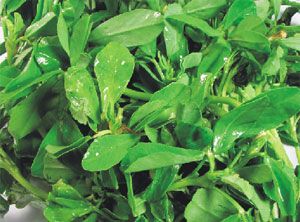
Fenugreek Seed
The name fenugreek or foenum-graecum is from Latin for “Greek hay”. The plant’s similarity to wild clover has likely spawned its Swedish name: “bockhornsklöver” as well as the German: “Bockshornklee”, both literally meaning: “ram’s horn clover”. Zohary and Hopf note that it is not yet certain which wild strain of the genus Trigonella gave rise to the domesticated fenugreek but believe it was brought into cultivation in the Near East. Charred fenugreek seeds have been recovered from Tell Halal, Iraq, (radiocarbon dating to 4000 BCE) and Bronze Age levels of Lachish, as well as desiccated seeds from the tomb of Tutankhamen. Cato the Elder lists fenugreek with clover and vetch as crops grown to feed cattle (De Agri Cultura, 27).
...more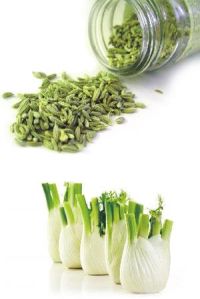
Fennel Seed
Fennel (Foeniculum vulgare) is a plant species in the genus Foeniculum (treated as the sole species in the genus by most botanists). It is a member of the family Apiaceae (formerly the Umbelliferae). It is a hardy, perennial, umbelliferous herb, with yellow flowers and feathery leaves. It is indigenous to the shores of the Mediterranean, but has become widely naturalised in many parts of the world, especially on dry soils near the sea-coast and on riverbanks. It is a highly aromatic and flavorful herb with culinary and medicinal uses, and, along with the similar-tasting anise, is one of the primary ingredients of absinthe. Florence fennel or finocchio is a selection with a swollen, bulb-like stem base that is used as a vegetable. Fennel is used as a food plant by the larvae of some Lepidoptera species including the mouse moth and the anise swallowtail. AppearanceFennel, Foeniculum vulgare, is a perennial herb. It is erect, glaucous green, and grows to heights of up to 2.5 m, with hollow stems. The leaves grow up to 40 cm long; they are finely dissected, with the ultimate segments filiform (threadlike), about 0.5 mm wide. (Its leaves are similar to those of dill, but thinner.) The flowers are produced in terminal compound umbels 5–15 cm wide, each umbel section having 20–50 tiny yellow flowers on short pedicels. The fruit is a dry seed from 4–10 mm long, half as wide or less, and grooved. Fennel is widely cultivated, both in its native range and elsewhere, for its edible, strongly flavoured leaves and fruits, which are often mistermed “seeds”. Its aniseed flavour comes from anethole, an aromatic compound also found in anise and star anise, and its taste and aroma are similar to theirs, though usually not as strong.
...more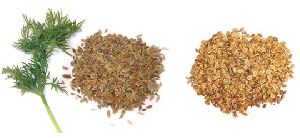
Dill Seed
Dill originated within an area around the Meditteranean and the South of Russia. Zohary and Hopf remark that “wild and weedy types of dill are widespread in the Mediterranean basin and in West Asia.” Although several twigs of dill were found in the tomb of Amenhotep II, they report that the earliest archeological evidence for its cultivation comes from late Neolithic lake shore settlements in Switzerland. Traces have been found in Roman ruins in Great Britain. In Semitic languages it is known by the name of Shubit. The Talmud requires that tithes shall be paid on the seeds, leaves, and stem of dill. Nomenclature and taxonomyThe name dill comes from Old English dile, thought to have originated from a Norse or Anglo-Saxon word dylle meaning to soothe or lull, the plant having the carminative property of relieving gas. In Romania it is called Mărar.
...more
Cumin Seed
Cumin has been in use since ancient times. Seeds excavated at the Syrian site Tell ed-Der have been dated to the second millennium BC. They have also been reported from several New Kingdom levels of ancient Egyptian archaeological sites. Originally cultivated in Iran and Mediterranean region, cumin is mentioned in the Bible in both the Old Testament (Isaiah 28:27) and the New Testament (Matthew 23:23). It was also known in ancient Greece and Rome. The Greeks kept cumin at the dining table in its own container (much as pepper is frequently kept today), and this practice continues in Morocco.Cumin fell out of favour in Europe, except in Spain and Malta, during the Middle Ages. It was introduced to the Americas by Spanish and Portuguese colonists. There are several different types of cumin but the most famous ones are black and green cumin which are both used in Persian cuisine. It has since returned to favour in parts of Europe. Today, it is mostly grown in Iran, Uzbekistan, Tajikistan, Turkey, Morocco, Egypt, India, Syria, Mexico, Chile, and China. The plant occurs as a rare casual in the British Isles, mainly in southern England, but the frequency of its occurrence has declined greatly. According to the Botanical Society of the British Isles’ most recent Atlas, there has been only one confirmed record since 2000.
...more
Coriander Seed
Coriander (Coriandrum sativam) is an annual herb in the family Apiaceae. Coriander grows wild over a wide area of the Near East and southern Europe, prompting the comment, “It is hard to define exactly where this plant is wild and where it only recently established itself.” Fifteen desiccated mericarps were found in the Pre-Pottery Neolithic B level of the Nahal Hemel Cave in Israel, which may be the oldest archeological find of coriander. About half a litre of coriander mericarps were recovered from the tomb of Tutankhamen, and because this plant does not grow wild in Egypt, Zohary and Hopf interpret this find as proof that coriander was cultivated by the ancient Egyptians. The Bible mentions coriander in Exodus 16:31: “And the house of Israel began to call its name Manna: and it was round like coriander seed, and its taste was like that of flat cakes made with honey.” Coriander seems to have been cultivated in Greece since at least the second millennium BC. One of the Linear B tablets recovered from Pylos refers to the species as being cultivated for the manufacture of perfumes, and it appears that it was used in two forms: as a spice for its seeds and as a herb for the flavor of its leaves. This appears to be confirmed by archaeological evidence from the same period: the large quantities of the species retrieved from an Early Bronze Age layer at Sitagroi in Macedonia could point to cultivation of the species at that time. Coriander was brought to the British colonies in North America in 1670 and was one of the first spices cultivated by early settlers.
...more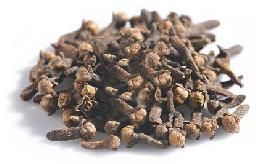
Cloves
Until modern times, cloves grew only on a few islands in the Maluku Islands (historically called the Spice Islands), including Bacan, Makian, Moti, Ternate, and Tidore. Nevertheless, they found their way west to the Middle East and Europe well before the 1st century AD. Archeologists found cloves within a ceramic vessel in Syria along with evidence dating the find to within a few years of 1721 BC. In the 3rd century BC, a Chinese leader in the Han Dynasty required those who addressed them to chew cloves so as to freshen their breath.Cloves, along with nutmeg and pepper, were highly prized in Roman times, and Pliny the Elder once famously complained that “there is no year in which India does not drain the Roman Empire of fifty million sesterces”. Cloves were traded by Muslim sailors and merchants during the Middle Ages in the profitable Indian Ocean trade, the Clove trade is also mentioned by Ibn Battuta and even famous One Thousand and One Nights characters such Sinbad the Sailor is known to have bought and sold Cloves.In the late 15th century, Portugal took over the Indian Ocean trade, including cloves, due to the Treaty of Tordesillas with Spain and a separate treaty with the sultan of Ternate. The Portuguese brought large quantities of cloves to Europe, mainly from the Maluku Islands. Clove was then one of the most valuable spices, a kg costing around 7 g of gold. The high value of cloves and other spices drove Spain to seek new routes to the Maluku Islands, which would not be seen as trespassing on the Portuguese domain in the Indian Ocean. Ferdinand and Isabella of Spain sponsored the unsuccessful voyages of Christopher Columbus, and their grandson Charles V sponsored the voyage of Ferdinand Magellan. The fleet led by Magellan reached the Maluku Islands after his death, and the Spanish were successful in briefly capturing this trade from the Portuguese. The trade later became dominated by the Dutch in the 17th century. With great difficulty the French succeeded in introducing the clove tree into Mauritius in the year 1770. Subsequently, their cultivation was introduced into Guiana, Brazil, most of the West Indies, and Zanzibar.
...more
Cinnamon
Native to Ceylon (Sri Lanka), true cinnamon, Cinnamomum zeylanicum, dates back in Chinese writings to 2800 B.C., and is still known as kwai in the Chinese language today. Its botanical name derives from the Hebraic and Arabic term amomon, meaning fragrant spice plant. Ancient Egyptians used cinnamon in their embalming process. From their word for cannon, Italians called it canella, meaning “little tube,” which aptly describes cinnamon sticks. In the first century A.D., Pliny the Elder wrote of 350 grams of cinnamon as being equal in value to over five kilograms of silver, about fifteen times the value of silver per weight. Medieval physicians used cinnamon in medicines to treat coughing, hoarseness and sore throats. As a sign of remorse, Roman Emperor Nero ordered a year’s supply of cinnamon be burnt after he murdered his wife. The spice was also valued for its preservative qualities for meat due to the phenols which inhibit the the bacteria responsible for spoilage, with the added bonus being the strong cinnamon aroma masked the stench of aged meats. In the 17th century, the Dutch seized the world’s largest cinnamon supplier, the island of Ceylon, from the Portuguese, demanding outrageous quotas from the poor laboring Chalia caste. When the Dutch learned of a source of cinnamon along the coast of India, they bribed and threatened the local king to destroy it all, thus preserving their monopoly on the prized spice. In 1795, England seized Ceylon from the French, who had acquired it from their victory over Holland during the Revolutionary Wars. (In the Victorian language of flowers, cinnamon means “my fortune is yours.”) However, by 1833, the downfall of the cinnamon monopoly had begun when other countries found it could be easily grown in such areas as Java, Sumatra, Borneo, Mauritius, Réunion and Guyana. Cinnamon is now also grown in South America, the West Indies, and other tropical climates.
...more
Chili
Chili peppers have been a part of the human diet in the Americas since at least 7500 BC. There is archaeological evidence at sites located in southwestern Ecuador that chili peppers were domesticated more than 6000 years ago, and is one of the first cultivated crops in the Central and South Americas that is self-pollinating. Christopher Columbus was one of the first Europeans to encounter them (in the Caribbean), and called them “peppers” because they, like black and white pepper of the Piper genus known in Europe, have a spicy hot taste unlike other foodstuffs. Upon their introduction into Europe chilis were grown as botanical curiosities in the gardens of Spanish and Portuguese monasteries. But the monks experimented with the chilis’ culinary potential and discovered that their pungency offered a substitute for black peppercorns, which at the time were so costly that they were used as legal currency in some countries. Chilies were cultivated around the globe after Columbus. Diego Álvarez Chanca, a physician on Columbus’ second voyage to the West Indies in 1493, brought the first chili peppers to Spain, and first wrote about their medicinal effects in 1494. From Mexico, at the time the Spanish colony that controlled commerce with Asia, chili peppers spread rapidly into the Philippines and then to India, China, Indonesia, Korea and Japan. They were incorporated into the local cuisines. An alternate account for the spread of chili peppers is that the Portuguese got the pepper from Spain, and cultivated it in India. The chili pepper figures heavily in the cuisine of the Goan region of India, which was the site of a Portuguese colony (e.g., vindaloo, an Indian interpretation of a Portuguese dish). Chili peppers journeyed from India, through Central Asia and Turkey, to Hungary, where it became the national spice in the form of paprika.
...more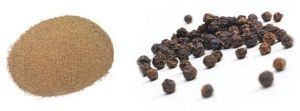
Black Pepper
Black pepper (Piper nigrum) is a flowering vine in the family Piperaceae, cultivated for its fruit, which is usually dried and used as a spice and seasoning. The fruit, known as a peppercorn when dried, is approximately 5 millimetres (0.20 in) in diameter, dark red when fully mature, and, like all drupes, contains a single seed. Peppercorns, and the powdered pepper derived from grinding them, may be described simply as pepper, or more precisely as black pepper, white pepper, or green pepper. Green peppercorns are simply the immature black peppercorns. Black pepper is native to India and is extensively cultivated there and elsewhere in tropical regions. Currently Vietnam is the world’s largest producer and exporter of pepper, producing 34% of the world’s Piper nigrum crop as of 2008. Dried ground pepper has been used since antiquity for both its flavour and as a medicine. Black pepper is the world’s most traded spice. It is one of the most common spices added to European cuisine and its descendants. The spiciness of black pepper is due to the chemical piperine. It may be found on most dinner tables in the industrialized world, often alongside table salt. Black pepper is produced from the still-green unripe drupes of the pepper plant. The drupes are cooked briefly in hot water, both to clean them and to prepare them for drying. The heat ruptures cell walls in the pepper, speeding the work of browning enzymes during drying. The drupes are dried in the sun or by machine for several days, during which the pepper around the seed shrinks and darkens into a thin, wrinkled black layer. Once dried, the spice is called black peppercorn. On some estates, the berries are separated from the stem by hand and then sun dried without the boiling process. Once the peppercorns are dried, pepper spirit & oil can be extracted from the berries by crushing them. Pepper spirit is used in famous beverages like Coca-Cola and many medicinal and beauty products. Pepper oil is also used as an ayurvedic massage oil and used in certain beauty and herbal treatments.
...more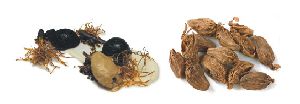
Black Cardamom
Black cardamom, also known as hill cardamom, Bengal cardamom, greater cardamom, Indian cardamom, Nepal cardamom, or winged cardamom, brown cardamom, thảo quả and tsao-ko) comes from either of two species in the family Zingiberaceae. Its seed pods have a strong camphor-like flavor, with a smoky character derived from the method of drying. The pods are used as a spice, in a similar manner to the green Indian cardamom pods, but those have a different flavor. Unlike green cardamom, this spice is rarely used in sweet dishes. Its smoky flavor and aroma derive from traditional methods of drying over open flames. It is also called badhi elaichi in Hindi. There are at least two distinct species of black cardamom: Amomum subulatum (also known as Nepal cardamom) and Amomum costatum or A. tsao-ko. The pods of A. subulatum, used primarily in the cuisines of India and certain regional cuisines of Pakistan, are the smaller of the two, while the larger pods of A. costatum are used in Chinese cuisine, particularly that of Sichuan; and Vietnamese cuisine.
...more
Ajwain
Ajwain originated in the Middle East, possibly in Egypt and the Indian subcontinent, but also in Iran and Afghanistan. It is sometimes used as an ingredient in berbere, a spice mixture favored in Eritrea and Ethiopia. Trachyspermum ammi, commonly known as ajowan, ajwain, ajowan caraway, carom seeds, or thymol seeds, is a plant of India and the Near East whose seeds are used as a spice.
...moreBe first to Rate
Rate ThisOpening Hours